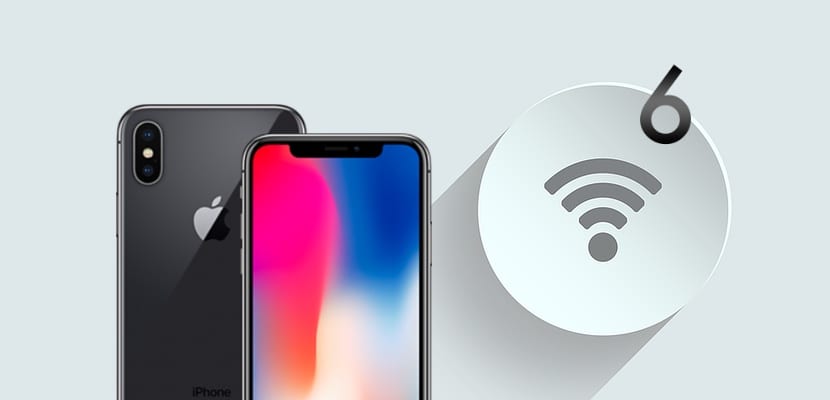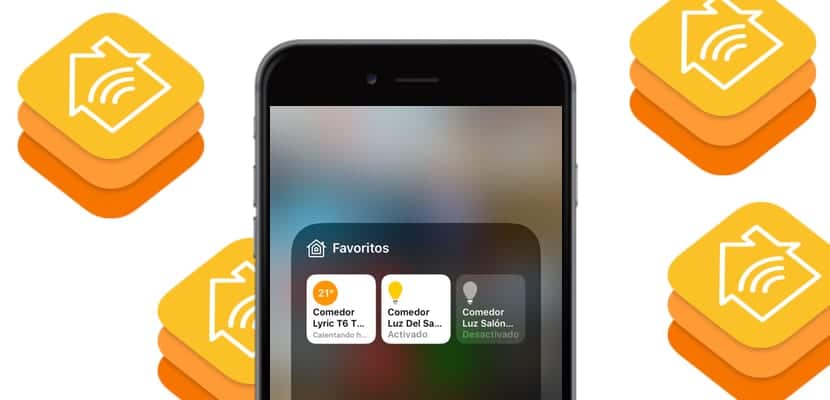
If you read us regularly you will have known that Among many other novelties, the iPhone that will be presented in this year 2019 will include support with the new WiFi 6 standard, it is important that we know the technology that our device houses if we want to be able to get the most out of it.
Stay with us and discover why WiFi 6 is so important and know its benefits before the presentation of the iPhone of 2019 that will include this technology ready to change the world. There are many things you have heard about it, but it is time to give it a good in-depth review.
What is WiFi 6 and why this new name?
WiFi 802.1.ac and similar things will sound familiar to you, a hell of a nomenclature for which we are continually analyzing devices of different kinds. Perhaps the WiFi standard should have adopted the same mechanism as the Bluetooth standard long ago, which as you well know is numerical and simply ordered from less to more, for example we have Bluetooth 4.2, Bluetooth 5.0 and so on. However, with this new way of calling WiFi, what they want is that we know more quickly and intuitively what type of network we are connected to at this exact moment to get an idea of the bandwidth and the quality of the connection to the that we will be able to navigate.

And it depends a lot on whether we are on a 2,4 GHz network, a 5 GHz network and even the capacity of the line if we are going to be able to navigate more efficiently or not. In this case, WiFi 6 is a natural evolution of the WiFi system that in theory should have been called WiFi 802.11.ax In view of the fact that we are leaving behind the WiFi standard 802.11.ac. In the same way, previous versions of WiFi will also acquire this new, simpler identification mechanism, that is, now WiFi 802.11.ac will be renamed WiFi, which will even allow this identification to be simply added to the status bar of our devices.
Is the WiFi 6 compatible with other versions?
As we have said, the WiFi 6 is nothing more than a natural evolution of the WiFi 801.11.ac, so as happened until now, any device WiFi 6 will be able to connect to WiFi transmitters that are working in previous protocols such as WiFi 5 (802.11.ac) for example, exactly the same as with the 3G or 4G connection that simply adapts depending on the quality of the signal, or what happens with devices with Bluetooth 5.0 that are capable of connecting to any Bluetooth protocol.

However, so that we notice some kind of difference using a device that has WiFi 6 it is just as important that the sender, be it a router or a repeater, is using this same protocol, something that will undoubtedly take much longer. And it is that, for example, in our homes we have routers that will not necessarily be updated to the new protocol, although we always have the possibility of taking a tour of Amazon and replacing our company's router with a more efficient one with a performance higher.
These are the improvements of WiFi 6
We are clear that an evolution of the protocol would go far beyond a simple name change, an example is that the WiFi version 5 (802.11.ac) until now was only capable of running on 5 GHz bandsThat is why our routers with the 5 GHz band are the ones that offer the most optimal navigation results. However, it usually has a problem, which we have less scope. This new protocol will also improve the range of WiFi in scenarios where transmission is often quite complicated, such as houses, where there are numerous obstacles such as walls and furniture.

- WiFi 5 (802.11.ac) 6,9 Gbps transmission
- WiFi 6 (802.11.ax) 9,6 Gbps transmission
Another differential aspect is modulation, while the highest offered by WiFi 5 (802.11.ac) is 256 - QAM, in WiFi 6 we will obtain up to 1024 - QAM, which results in 600 Mbps per stream (80 MHz) with a maximum of 10.000 Mbps, up to 3.000 Mbps above what the previous version of WiFi is capable of offering. Of course, the improvements will be palpable especially when we have many devices connected to the same WiFi network, that is, It is designed to be able to support all the needs of smart home products, which is why the fact that it works in the 2,4 GHz bands makes it so special.
OFDMA technology will improve efficiency and performance
You have just read it, the key functionality, above the data transmission speed (more than high for home use for users who already have 600/600 in Spain for example) is the fact that performance can be improved by managing devices smart phones connected to the same WiFi network. The standard OFDMA (Orthogonal Frequency Division Multiple Access) will improve performance by offering less delay or latency in connection and task execution. This will manage to branch the channel that the router is using so as not to use all the bandwidth in sending an order to an IoT device or of any type, and thus efficiently managing the bandwidth for the devices that need it most, has all the logic in the world.

You will also save on power consumption of the receiving device thanks to the TWT (Target Wake Time), which will set logical times for WiFi communication with the transmitter, instead of doing it automatically and randomly. Definitely, WiFi 6 is very good news for the iPhone of this year 2018, and it is that in terms of other technologies it is true that Apple has a hard time admitting new features, but at the WiFi level it has always been at the forefront for all of its devices, an example is their early adoption of the 5 GHz band. Be that as it may, the connected home is gaining special importance in our connections, so we need network cards to match it.